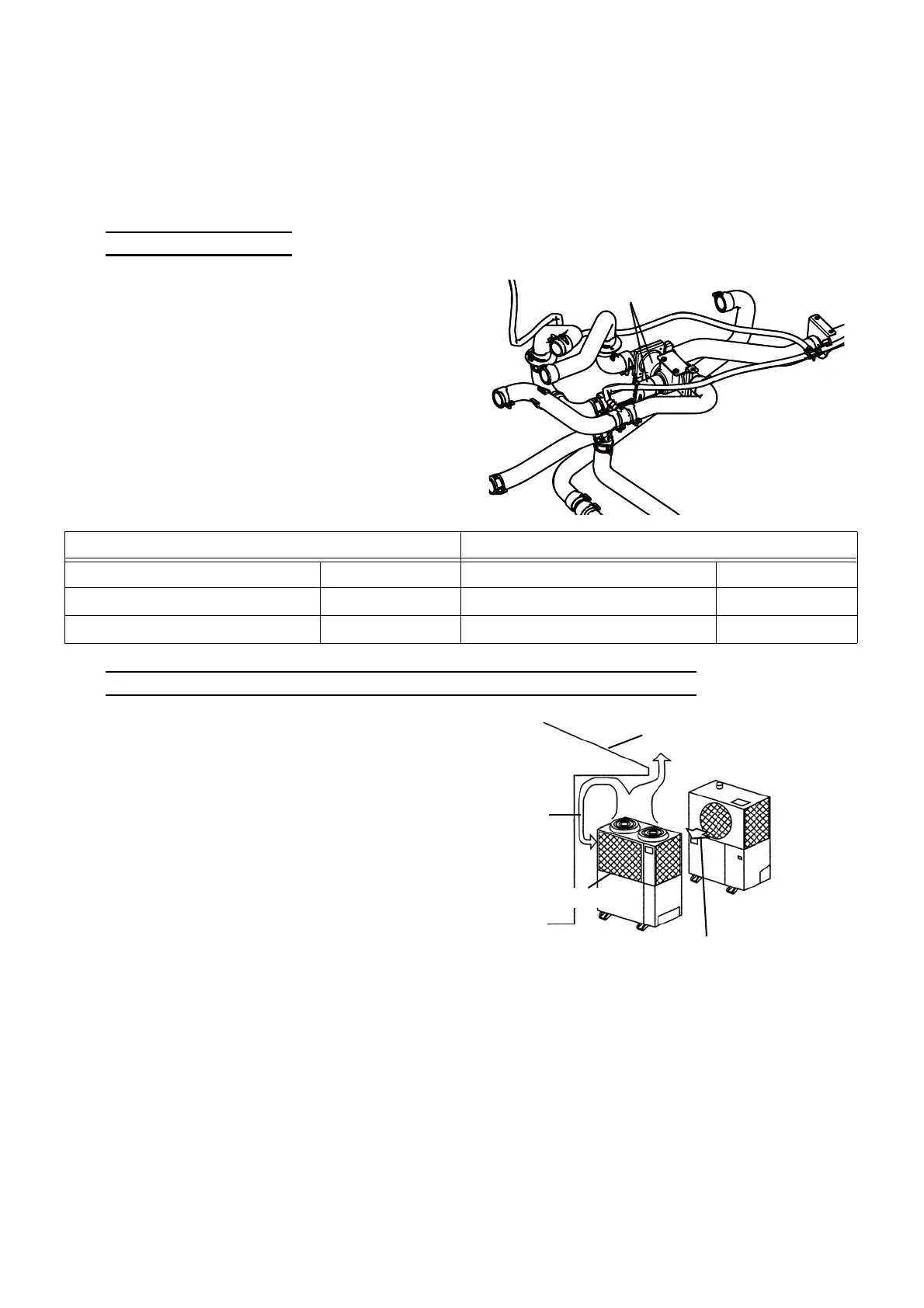216
TROUBLESHOOTING
3) Check output current from the DCBL PCB
(1) Select "Engine coolant refilling (code No. 0A)" in the check mode of the board maintenance functions.
Then turn the engine coolant pump ON.
(2) Check power supply current value for the engine coolant pump at CN9[1], [2], and [3] on the DCBL PCB
with a clamp tester.
25) Inspect Thermostat
26) Check Engine Coolant Heat Dissipation Condition (in cooling)
When the engine coolant circulation amount is not
normal even if the engine coolant pump is in good
shape (Refer to P215, [Inspect Engine Coolant
Pump]), the thermostat may be improper.
Touch the hoses at each end of the thermostat, and
check for temperature difference.
In thermostat opening: Without extreme tempera-
ture difference
In thermostat closing: With extreme temperature
difference
Thermostats
Thermostat (140 ℉ (60 ℃ ) open) Thermostat (158 ℉ (70 ℃ ) open)
Temperature at the start of opening 140 ℉ (60 ℃ ) Temperature at the start of opening 158 ℉ (70 ℃ )
Temperature at full opening 163 ℉ (73 ℃ ) Temperature at full opening 181 ℉ (83 ℃ )
Thermostat valve lift amount 0.33 inch (8.5 mm) Thermostat valve lift amount 0.33 inch (8.5 mm)
If the radiator temperature is high as a whole in
spite of a normal temperature difference between
the inlet and outlet (Refer to P214, [Check En-
gine Coolant Circulation]), the radiator may be
insufficiently dissipating heat.
1. Is ambient temperature around the outdoor unit
excessively high due to short circuit or other
causes?
2. Are the radiator fins clogged or covered by dirt?
Eaves
Short circuit
Radiator portion
Hot air from the adjacent outdoor unit
